Ship’s Papers, Passports, and Privateers: Marco Tomaschett on Collectible Documents and U.S. Maritime History
Water vessels played a critical role in shaping the early history of America. That U.S. maritime history is brief relative to some other nations is an advantage, because many artifacts are still available to tell that sometimes astonishing story.
Privateers
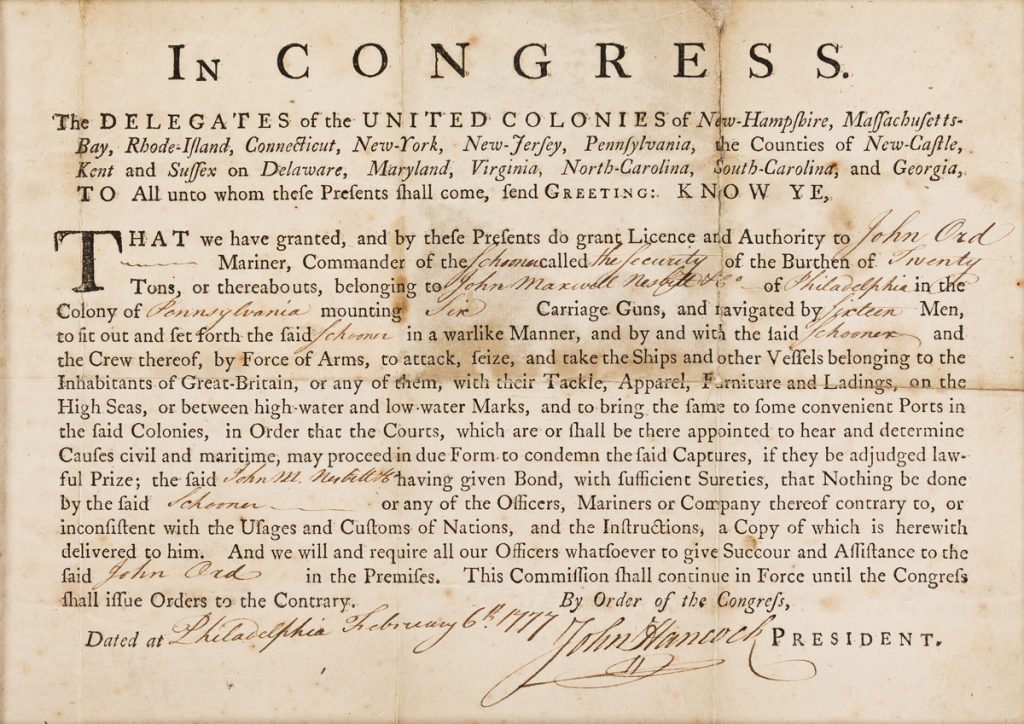
In eighteenth-century America, agriculture, shipbuilding, and commerce were the dominant industries, with commerce continually gaining in importance. The colonies exported tobacco, rice, horses, and lumber, while importing manufactured goods, mostly trading with Britain, whose Royal Navy protected the trade routes. When the Revolutionary War severed commercial ties with Britain, the Continental Congress issued “letters of marque” authorizing the owners of merchant ships with sufficient arms to capture and loot enemy ships. These “privateers” were necessary to protect trade in the absence of the Royal Navy, as the Continental Navy at its largest had a mere 65 vessels, of which only 11 survived the Revolution.
Passports & Sea Letters
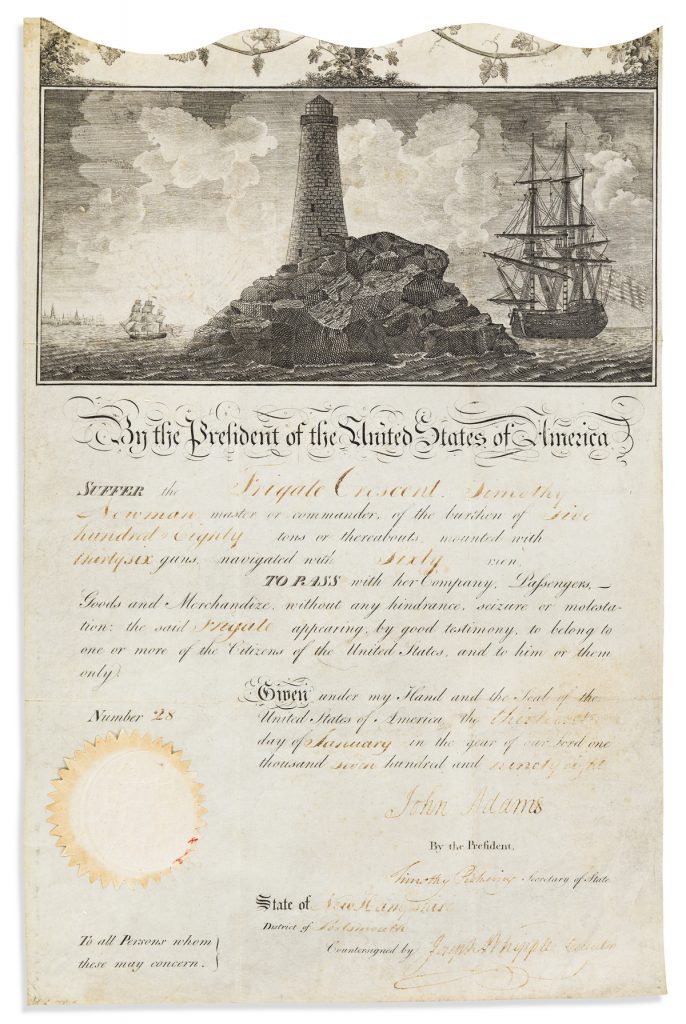
Until the Revolution ended with the signing of the Treaty of Paris in 1783, a trade alliance with France allowed crucial American supply lines to enjoy the protection of the French Navy from harassment by the British and Barbary pirates. After the war, American merchants passing through the Mediterranean were preyed upon by North African pirates, who demanded payment for the return of hostages or for protection from other pirates. Without an adequate navy, the U.S. government paid tributes to the North African leaders in an effort to control the pirates. On one occasion, the tribute took the form of a newly-built American warship: the frigate Crescent. This frigate, along with all vessels of the period, carried documents for purposes of identification called “ship’s papers.” The Crescent carried among its papers a “passport,” the very same document that was auctioned by Swann Galleries in 2020 (see illustration). A passport was a government document separated into two parts with a distinctive, jagged cut, one part issued to a merchant, the other copied and send to consular officials stationed at various ports, especially those in the Mediterranean. If the scalloped edge of the merchant’s passport matched the consular copy, the merchant’s identity was established, as was its entitlement to protection. When vessels were bound for the southern hemisphere, their papers included “sea letters,” documents similarly used for identification, written in multiple languages for the convenience of officials in nations who were parties to American treaties.
Related Readings: Leaving the Land: Ship’s Logs from England to the Mediterranean in the Nineteenth Century
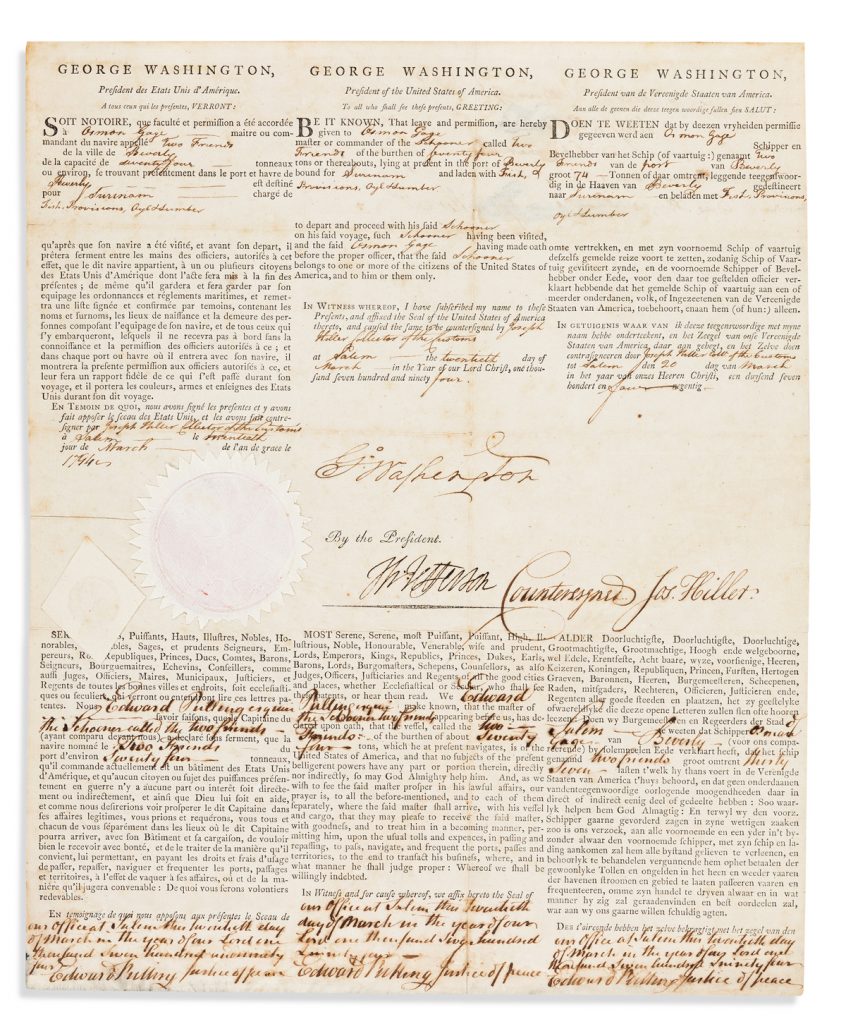
Trade Agreements
With the war over, the American government sought new trade agreements with Britain and other European powers, and imposed tariffs designed to foster the development of domestic manufacturing and generate federal revenue. To enforce the tariffs, Congress established the Revenue Marine in 1790, which later became the U.S. Coast Guard. In 1794, Congress passed the Naval Act, authorizing the construction of 6 warships—the beginnings of what would become the U.S. Navy. Although American trade increased worldwide, it was not until the First Barbary War in 1801 that U.S. Navy ships began to effectively repel the attacks of the Barbary pirates.
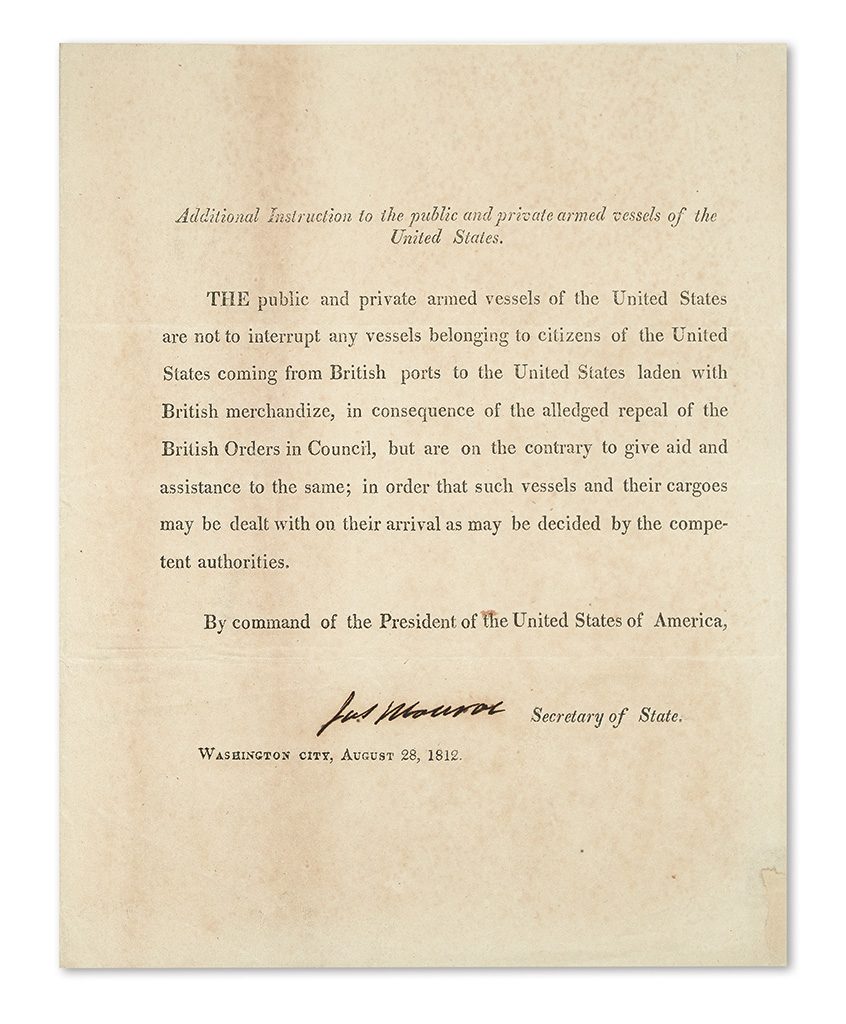
As the pirates’ threat to marine commerce declined, attacks from British vessels increased. Britain was engaged in the Napoleonic Wars against France, which put a tremendous strain upon the supply of trained mariners; to answer the supply, Britain established policies demanding the “impressment” (capture and forced recruitment) into the Royal Navy of anyone suspected of desertion. In practice, impressment often included sailors who were never enlisted, many of whom were Americans. In response, Congress enacted the Embargo Act of 1807, designed to pressure Britain and other nations to cease the British impressment of Americans. One of the causes of the War of 1812 was the failure of the British to comply. Two months after the start of the war, Britain repealed the laws regulating impressment, prompting the Americans to drop the trade embargo. Although impressment had ceased and Secretary of State James Monroe ordered that British trade be allowed to resume (see illustration), the war continued until the Treaty of Ghent was ratified in 1815.
Whaling
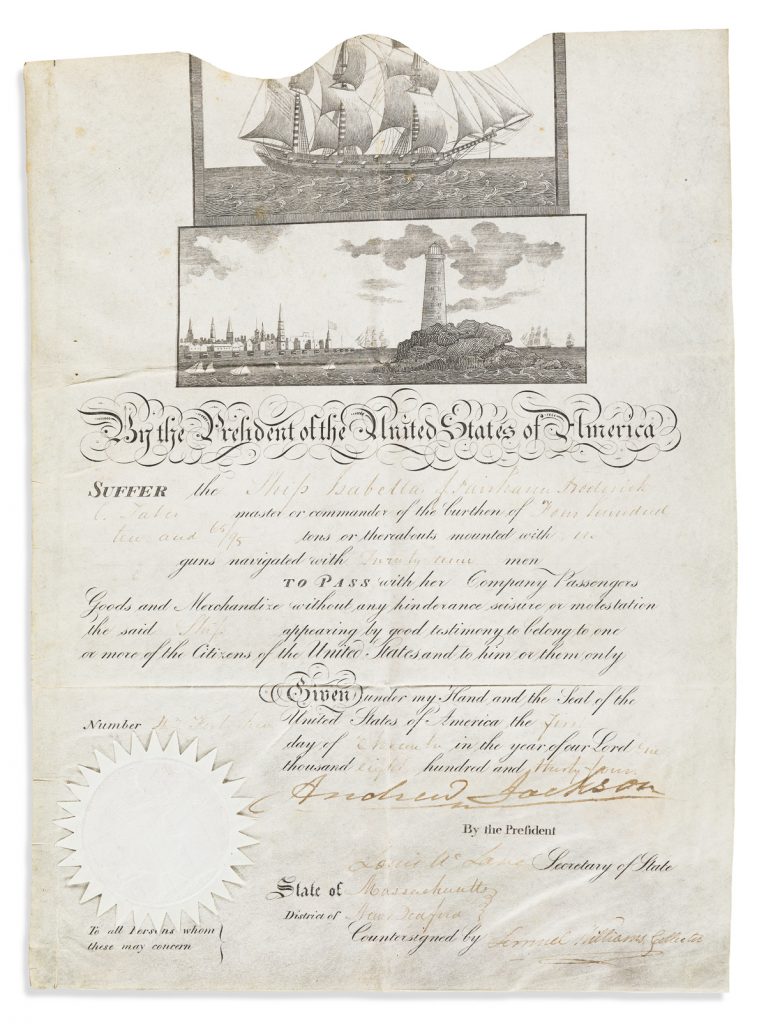
Even the briefest summary of early America’s relatively brief maritime history should not omit mention of whaling, an industry which flourished during the late eighteenth and nineteenth centuries, centering on New Bedford and Nantucket Island in Massachusetts. One of the more desirable types of American maritime document are the ship’s papers for whaling vessels, partly because they can evoke the romance surrounding the rugged lifestyle of whalers that has given rise to uniquely American crafts, literature, and folkways.
Related Reading: Manuscript Diaries Tell Tales of a Growing America
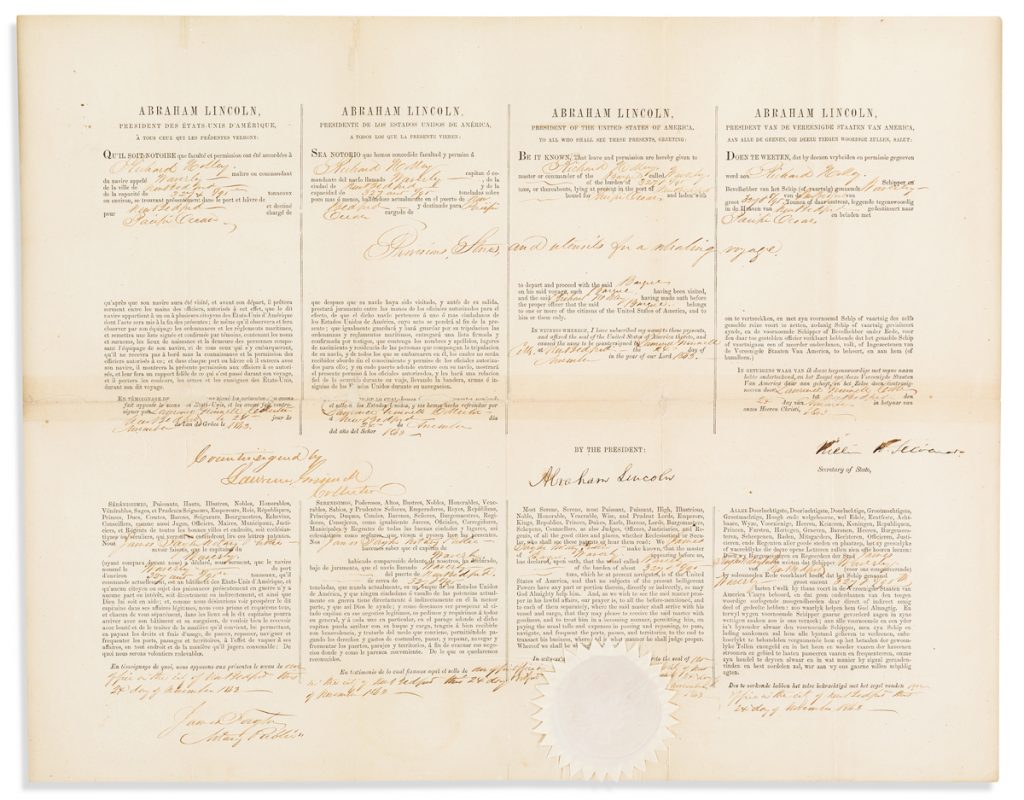
Do you have documents signed relating maritime history?
Learn about how to consign to an auction, and send us a note about your item.

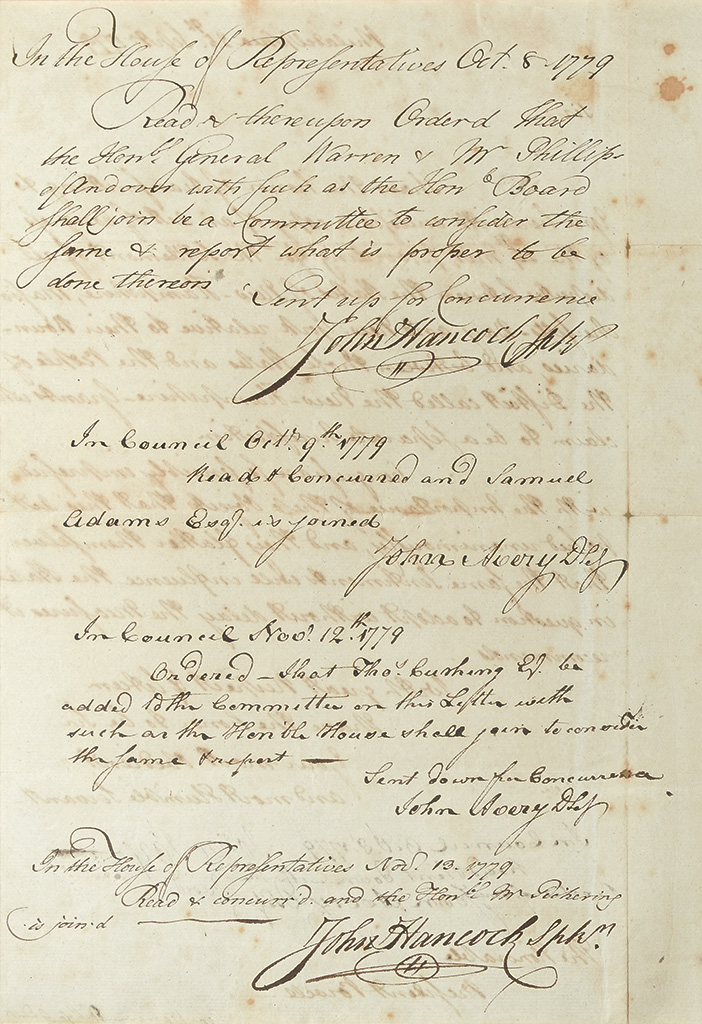
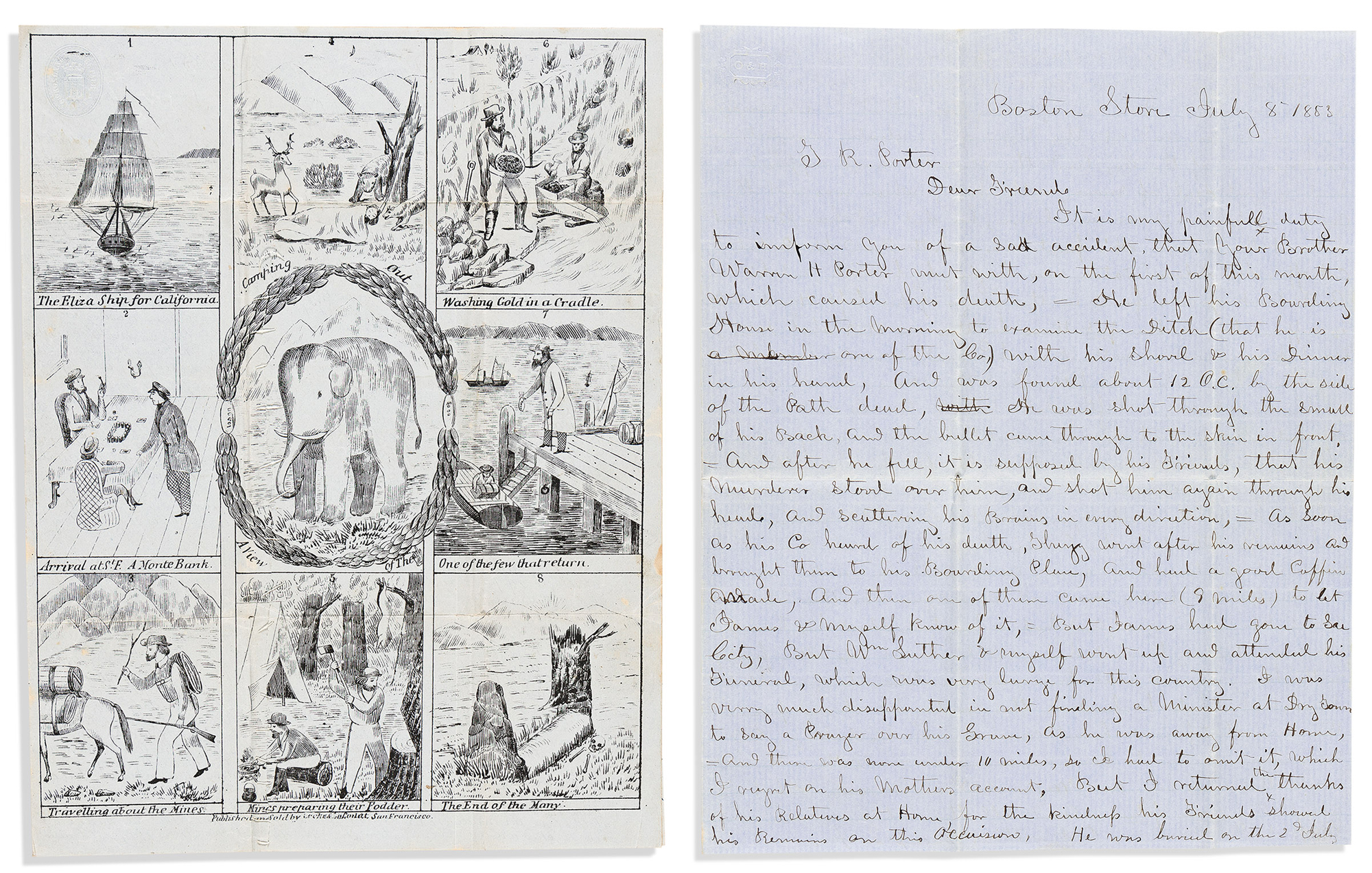





![Grace Meschery-McCormack shares about two copies of Fernando de Rojas’s ‘La Célestine,’ including a limited edition copy illustrated by Pablo Picasso.
At auction April 22. Learn more about the works at the link in our bio.
#Rarebooks #rarebookdealer #antiquarianbooks #auctions
_______________________________________
Music Credit:
Schubert - Piano Quintet in A major ‘The Trout’, D. 667 - IV. Andantino – Allegretto
Music provided by Classical Music Copyright Free on Youtube [https://tinyurl.com/visit-cmcf]
Watch: • Schubert - Piano Quintet in A major ‘...]](https://scontent-iad3-1.cdninstagram.com/v/t51.75761-15/491443494_18499096345036585_5935932878956098058_n.jpg?stp=dst-jpg_e35_tt6&_nc_cat=107&ccb=1-7&_nc_sid=18de74&_nc_ohc=Z9JEGkAXHREQ7kNvwGGUot6&_nc_oc=AdmJSnx8eY0WSW4ZCrMwPTmQIsTfafOSyYaXtUeWluHXKdvbxi2gWaQXyIMLUy6-JA4&_nc_zt=23&_nc_ht=scontent-iad3-1.cdninstagram.com&edm=AM6HXa8EAAAA&_nc_gid=sOlXGmyR_sjHZpKKW8671g&oh=00_AfGliuMLUVlwVzMCKk9TjEHYMpt2PUahB6IfEW7KpisF5g&oe=68091A91)









